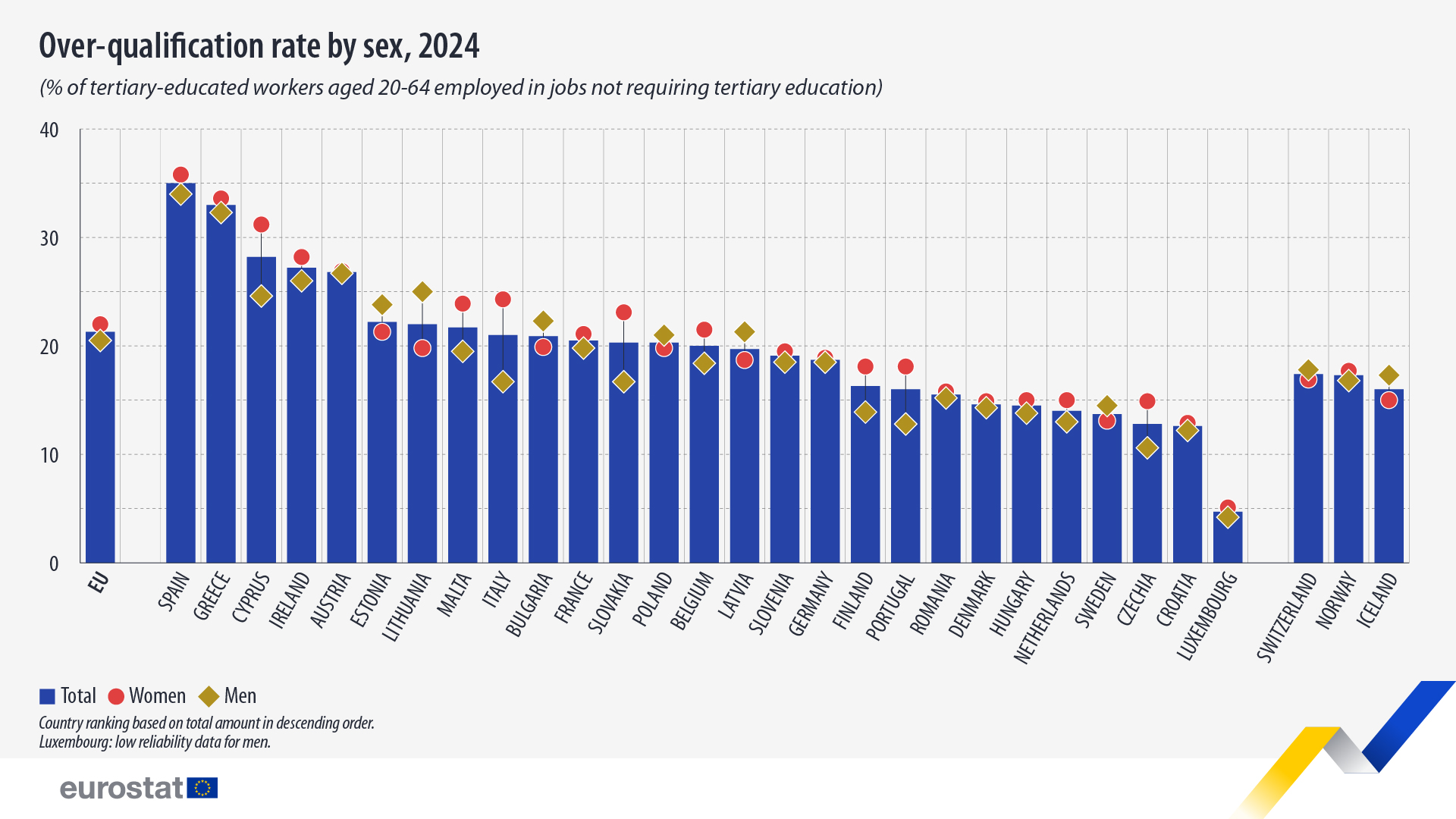EU’s employment rate reached almost 76% in 2024

In 2024, 75.8% (197.6 million people) of the EU’s 20 to 64-year-olds were employed, the highest share recorded since the start of the time series in 2009. The employment rate was up 0.5 percentage points (pp) compared with 2023 and 1.2 pp compared with 2022.
Among the EU countries, the highest employment rates were recorded in the Netherlands (83.5%), Malta (83.0%) and Czechia (82.3%). The lowest rates were recorded in Italy (67.1%), Greece (69.3%) and Romania (69.5%).
This information comes from the data on the labour market published today by Eurostat. This article presents a handful of findings from the more detailed Statistics Explained article.
Source dataset: lfsi_emp_a
More women over-qualified than men
In 2024, the EU over-qualification rate was 21.3%, with 20.5% for men and 22.0% for women. Over-qualification is when people with tertiary education are employed in occupations that do not require such a high level of education.
Among the EU countries, the over-qualification rate was highest in Spain (35.0%), followed by Greece (33.0%) and Cyprus (28.2%).
Meanwhile, Luxembourg (4.7%), Croatia (12.6%) and Czechia (12.8%) recorded the lowest rates.
Source dataset: lfsa_eoqgan
In 21 of the 27 EU countries, women had higher over-qualification rates than men, with the largest differences recorded in Italy (7.7 pp), Slovakia (6.4 pp) and Malta (5.3 pp).
However, in 6 EU countries, men had higher over-qualification rates, with the biggest differences recorded in Lithuania (5.2 pp), Latvia (2.6 pp) and Estonia (2.5 pp).
For more information
- Statistics Explained article on employment - annual statistics
- Thematic section on employment and unemployment (LFS)
- Database on employment and unemployment (LFS)
- Social scoreboard
- Statistics4Beginners on the labour market
Methodological note
Over-qualification rate: people with tertiary education (international standard classification of education (ISCED) levels 5-8) employed in occupations that do not require such a high level of education (equivalent to international standard classification of occupation (ISCO) major groups 4-9), as a percentage of all employed people with tertiary education. This definition is based on ILO’s International Standard Classification of Occupations: Structure, group definitions and correspondence tables.
If you have any queries, please visit our contact us page.

